Every teacher knows these students: the reluctant reader, the class clown, the resistant writer. Cris Tovani, author of Why Do I have to Read This? Literacy Stategies to Engage Our Most Reluctant Students, views these masks that kids wear as entry points into understanding who they are and then responding to their needs.
In my conversation with Cris, we talk about:
developing a partnership approach to teaching and learning with our students,
planning literacy instruction long term so we can anticipate challenges, and
how our own interests and questions can be models for our students’ inquiries.
Related Resources:
Transcript of Conversation
Matt Renwick (00:04):
Welcome Chris to the podcast.
Matt Renwick (00:10):
I was just sharing my introduction to your work. This is 20, almost over 20 years ago. Now your first book, I Read It, But I Don't Get It. I was a newly minted fifth and sixth grade teacher. And I realized I had to teach readers and not just reading as a subject area. And I wasn't sure what to do. So I found your book and read it a couple of times. I had so many post-its in there, kind of taking it to heart, what you recommend. And the text was much thicker with all the post-it notes inside of it after I'd read it a couple of times. I've enjoyed every one of your books since then. Your newest one is Why Do I Have to Read This? Literacy Strategies to Engage Our Most Reluctant Students. So tell me if you can, tell us what prompted you to write this book?
Cris Tovani (01:02):
Well, thank you for reading my book. I do appreciate that and for your time. You know, I guess I think for me, there was always, there's always been kids that I just struggled to hook and I really wanted to dig into to those kids to figure out what, you know, how do I get, how do I get those students engaged? And we were just talking about my instructional coach and friend Sam Bennett, and I think when she would come visit, that was one of the things that she would always ask me, you know, who did you get smarter about today and what did you learn about so-and-so? And that so-and-so was usually a kid who was disengaged. And so it became a sort of curiosity for me to think about, okay, what's that? What does that student need to, you know, just to dig into the text, to dig into writing and discussing them, just really participating in school.
Matt Renwick (01:59):
You mentioned Sam in your Stenhouse podcast and she noted that it took her four years or around 40 classroom visits before she could actually ask you a question that you cared about, or make a point that changed how you. What happened in those first four years? Was it around building relationships and professional trust?
Cris Tovani (02:20):
Well, if you don't know Sam, she's a little hyperbolic and I don't think it was four years. We always had a good relationship. We always laugh and had fun. I think what I started to really let her coach me was when she started sharing questions, she was truly curious about, and it became more a partnership than somebody facilitating people running through my classroom. And I think that's when it became fun because I was taking all these risks, letting visitors observe. Until she started taking risks, sharing what she did, what she wanted to get smarter about it, that's when things started clicking.
Matt Renwick (03:00):
So when she was sharing her own inquiries with you, it became more of a level playing field, so to speak.
Cris Tovani (03:08):
Yeah. Yeah. And you know, we laughed because I introduced her the first few times when she started facilitating visitors for me as my coach. What I was really trying to do was give her credibility to these kinds of crusty high school teachers that had been sent there to be fixed by their principal. I didn't really intend for her to be my coach, but she took that to heart. And so initially it was like, "Wait, what are you doing? What, what are you telling me? Is this for, what are you asking me this for?" We sort of had to redefine our roles and she, she just didn't give up on me either. That was the other piece too. I think she just kept coming back and coming back with questions. And finally there was some things that I started to care about. I saw how much she could really lend them on instruction.
Matt Renwick (03:55):
Yeah. That story with her pushing you to rethink that one class and honorable of you two to open up like that. So that, I think I just felt very affirming when I read that. And I think anyone can read this book and just feel like I can do that and nd it's okay to make mistakes. Speaking of trust, um, you kind of use the metaphor of masks, which I'm sure you, weren't thinking about when you wrote this to our current reality. The mask, more of a metaphor of just the personas and personalities that kids wear when they come into your classroom. The mask of apathy and anger, for example. But they all seem to relate to relationships and trust that that we have with our kids, especially in the beginning of the year. What makes a teacher trustworthy to help pull off the masks with kids?
Cris Tovani (04:53):
You know, it was weird. There was that, that we wrote about masks, because we turned the final draft in way before COVID. I think for me, one of my core beliefs is that students would, if they could. That nobody wants to look like a loser or fail. And so when I would see kids coming in angry or fooling around. I just didn't want to label them as that way all the time, because I had seen them in different contexts. I had seen them around the school or on the football field, and they didn't have that same mask on. And so when they would come into class with that mask on, it was just this kind of fun challenge, really, to figure out, "Okay, what is this kid going to need to take this mask off and be serious like he is when hewhen he's on the field with his football team, or when he's in the cafeteria talking to his buddies?" How can I, you know, get him to really be vulnerable too and what his needs are or how he'd like to get smarter?
Matt Renwick (06:03):
Hmm. I'm thinking about Mauricio is one example from your book in the beginning. All these kids were trying to develop their identities at the secondary level and who they are while trying to fit in and avoid looking dumb. What you talk about there, it seems like entry points with these kids, not as necessarily bad things, they bring a different mask to your classroom, but as ways to engage with their level. So Mauricio did not want to finish his writing, and he was done. But you presented that authentic audience to him and that engaged him to write a better piece through the writing process. Can you say more about that?
Cris Tovani (06:47):
Sure. Yeah. Mauricio was a really great kid, but he really just intended to graduate from high school. Part of it was because he was undocumented and for college really wasn't an option at that point for him. He was just trying to get by with minimal effort. So when I think about myself, like when I'm just trying to get by, or when I'm doing something that I don't like to do, or that's hard for me to do, I've got to have a real reason to dig back into it. I think that having an audience that, that we send you, I send writing out to people, because I think that gives you an urgency to make it better. I don't know, it just seems like if a real person is going to read it, you're going to try better and you're going to revise it. You're going to put some effort into it. The kids all knew I loved them. So, you know, it was like, "Okay, whatever, this is good enough." But for other people, that seemed, an authentic audience, seemed to lend some urgency to kids wanting to redo and revise.
Matt Renwick (07:49):
So then that leads into the heart of the text is developing curriculum that you can anticipate, CYA. It was an interesting approach. You have expectations for kids, right. But sometimes those can be reflected in our curriculum. So how does your approach with curriculum so that we're not, I guess, selling them short, how does your approach to curriculum, CYA, help you keep your expectations high?
Cris Tovani (08:19):
Well, I read when I was writing a book, Sam gave me a little excerpt from, um, Steven Wolk's book, Being Good. He cites two researchers in there, deMarrias and LeCompte's, and their definition of what curriculum was. I didn't really know the curriculum was everything teachers do. I just thought it was, you know, the stuff you had to read or write or view. I didn't realize it could also be the way you arrange the seating in the room or talk to kids. And so it sort of opened my eyes, that curriculum is so much bigger. We were, Sam and I were sitting there doing a little revising, she helped me with the major editing of this book, and she said, "Okay, when you go in to do demo lessons, how do you prepare for these kids that you've never seen before?"
Cris Tovani (09:11):
Like, like how do you plan for that? And I just looked at her and I said, "Well, I gotta cover my ass." We'd start laughing, at CYA. So we started to take that Curriculum You Anticipate for mixed audiences. I know it was of gotten to like a PG rating now on your podcast. But to think about, if you're not one for longterm planning, which I wasn't, I didn't want to waste my time planning for kids. I didn't know yet, which was a big mistake because once kids come to the class, you hit the ground running. I realized that if I did a little bit of long-term planning, it was going to give me more time, in class doing individualized teaching or instruction because I wasn't trying to coax a kid into doing what I wanted him to do.
Cris Tovani (10:00):
And so, you know, you've taught and you've been a principal. You just start to accept that, you know you're going to have struggling readers. We're going to have at least one, and you know you're going to have somebody who's going to say, "This is stupid. I really learned this." And you know you're going to have somebody who says, 'Why do I have to read this?" And, you know, you're going to have somebody who wants to know, is this good enough, they need a model. So if I started anticipating some of those questions, as I planned units, I would have that text ready for the kid who struggled. I would have a reason to say, "Okay, here's why we're digging into this." I have a case study that, the one I had chosen to use as a model for the class didn't work, I would have another case study I could share with the kids. So he could see a reason. Those kinds of things in the CYA structures helped me with the long-term planning. So during the day when I'm with kids, I can make those tweaks. And those small changes to re-engage kids who have kind of dropped off a little bit.
Matt Renwick (11:06):
And you carry those plans for year after year, as any curriculum, but you adapt them to each group of kids that you get?
Cris Tovani (11:18):
Yeah. And so you thinking about, you know, I'm trying to couch, I'm trying to really cradle all standards in compelling topics.
Matt Renwick (11:30):
The cradling of the standards. I think that for me, that made a lot of sense,
Cris Tovani (11:34):
This is all that equity work we're talking about now, and fairer standards to different populations of kids and just trying to think about, if I can find a really compelling topic, that's going to be timeless. So work from the previous year that I don't necessarily have to change. The fun work would be, you know, opinion articles and updating the text. I am just trying to build onto each year, onto what I've done the year before, but not to a point where you forget what it was like on a first read. When you read the same book over and over again with kids, you just forget what it was like, and then you are not as patient. So I tried to model a couple of those in the book for teachers. So they could see that not every year they were having to throw everything out and start over again, because that is just grueling in terms of planning. And also, I think articulating what you've done between grade level as well. If every year the teachers are doing something different than, than they did a year before, then it's hard for 10th grade teachers to know how to build onto that.
Matt Renwick (12:35):
So you want that articulation through, throughout the grades too. Is there a tool or a template that you liked? That was one thing I was wondering too, is do you use a curriculum mapping tool or do you use more just a Microsoft word document? Where do you keep these plans?
Cris Tovani (12:57):
Well, I have a format and I have it in the book. I think I have it in the book, where I just kind of go through all those six keys. I literally just write them out. And then I have that workshop wheel where the work time is a major part of the time I'm with kids. And that's where I start thinking about, okay, what are kids going to read, write and talk about during that period? So, I guess I have two tools. I have one to kind of do a long range plan, and then I've got a little daily plan that is very simple that there's some days I don't do it every day. But I don't have to because of that long-term plan in place. I know where I'm going.
Matt Renwick (13:44):
You got two things in place. You've got the unit of study, but you've got the framework of the workshop model that kind of drives your daily instruction. I remember a quote that I appreciated too. Early in your teaching career, you felt like "Everyday it felt like starting over again." That's when you started and I felt the same way teaching too. in my first years. You started to integrate more purpose in your workshop beyond just becoming just better readers and writers, which is not a priority for every kid in our classroom. But looking towards something. You just saw that larger purpose. Workshop connotes making something, right? And so you talk about the makes and the dos in your tasks with them.
Cris Tovani (14:27):
Yeah. You know, I was an elementary school teacher for 10 years before going to high school. The last grade I taught was first grade before I had high school. I had learned a lot and had the privilege to study a little bit with Donald Graves and Donald Murray. And so I brought a lot of that old-school workshop to high school with me. I think my mindset was okay, I'm gonna use workshop to make them into better readers and writers so they can survive their other courses. I thought the strategies as really tools to access content. The problem was, you're right, when you say that that's not enough for a lot of kids. I wasn't giving kids a chance to use those tools to do real work. And I think that's where, planning with long term plans with compelling topics in mind, really gave kids an opportunity to read and write and talk about authentic things that were happening.
Cris Tovani (15:34):
I think it goes down to these reasons, like kids need more than one reason to really read a lot of times. I could get kids to do things just because they like to, but there was always three or four, especially 10th grade girls that would I just annoy, I don't know why. But it wasn't enough for them. But Once there was an audience that they were writing for that hooked those three. Sometimes it was controversial questions that didn't necessarily one right answer that hooked another three kids. Choice of texts with another few kids. So I started thinking about, okay, how can I give kids more reason to read and write? I think then that's when the workshop really started coming alive, they were making things that they saw a purpose in.
Matt Renwick (16:21):
You seem to add more structure to a workshop model in a sense, in terms of your long-term planning. I mean, you were very fluid in your daily instruction, but adding more maybe entry points, I guess, to the unit of study itself. That was what I took away.
Cris Tovani (16:35):
Yeah. I interview people all the time formally and sometimes more informally. I just started realizing how many people just didn't choose to read or like to read. And it didn't matter if you gave them the hottest YA book there was, or the best seller on the New York Times, just because you said it was a good book that wasn't going to be enough. Especially when I would talk to men or young men, they were like, "I want to read for reason, I want to read to be able to do something." And that kind of really hit home with me, that a lot of kids in my intervention classes were ones who just, who didn't read for enjoyment, who didn't read, because somebody said this is a great book. But they would read if it was something that was going to empower them.
Matt Renwick (17:28):
The stories from the book are great. And you kind of walk the reader through every process, from where they started to using these tools to be successful, empowered. This quote from page 67, I highlighted: "Our questions drive how we build our prior knowledge about a topic. Our goal is not to memorize facts, dates, names, or places; it’s to study a real-world problem that can affect how we vote, the health of the economy, and how we respond to an international issue." So you made a good point there too about providing students with background knowledge that, that they genuinely care about. What is your process for collecting this information and knowledge to be able to give them those additional entry points? I know you're active on Twitter, for example, you pull up permission from there. What is your reading diet like?
Cris Tovani (18:20):
I tend to get a lot of, I read a lot of nonfiction. I read a lot of newspapers. I don't read as much fiction and I probably should, because I think I like some of those young men of my classes, I like to read and get smarter about something. I think that that whole background piece: there's a study I read by Hattie and Yates and they talked about how background knowledge is the number one predictor of success. The faster you can assess what kids know, the faster you can build it so they can go deeper. And I thought, Okay, so what would that look like if we were trying to build background knowledge about an issue that you didn't have a lot of information about? So what I write a lot about in the book is Syria.
Cris Tovani (19:10):
I had just kind of heard snippets of the Syrian refugee crisis, and I didn't really know what it was about. But I thought, Okay, I think that would be a really interesting unit to build, and while I'm building that, I can watch how I build my own background knowledge. That will inform how I share with how I can teach kids to build their own. So I think as a teacher, and I learned this from Debbie Miller, an amazing first grade teacher in Colorado, Debbie said, "My job isn't to build background knowledge for these first graders. It's to show them how to build their own background knowledge because that's going to empower them." And so watching what I need to get smarter about an issue or a topic informs them what I want to share with students.
Cris Tovani (20:00):
It's like Syria. I really wasn't even quite sure where on the map it was. I mean, I knew it was in the Middle East and I wanted to know like what the big deal was and why Obama was crying because of the chemical weapons that had been dropped. I started asking all these questions and then those questions led me to nonfiction, but then the questions I had helped me sift and sort what part of that non fiction I read. It was such a big topic that even though I had to study that for two months before I taught the unit, there was so much more I didn't know about it. That then provided that sort of shoulder-to-shoulder collaboration that I could do with the kids. "Here's how I found this out. Maybe you can find your answer to your question, trying the same process." So I think it's like being more collaborative and just modeling those thinking processes for kids.
Matt Renwick (20:54):
Sounds like a similar partnership, relationship between you and your coach.
Cris Tovani (21:00):
Yeah. I mean questions, right? Questions drive, our curiosity drives what we give our time to and what we decide to read and what we decided to skip and what we decide to read more of. I think it's just a lot of it's reigniting that curiosity with high school kids. They're curious, just not necessarily about the topics we want them to be curious about. We have to create that curiosity.
Matt Renwick (21:26):
The concept of engagement has been around a while. But I think this book presents it in a whole new light and just allows the reader, educator to dive deep into your process and kind of walk out of it feeling like they can do it. The book is Why Do I Have to Read This? Literacy Strategies to Engage Your Most Reluctant Students by Cris Tovani. This is your fifth book, correct? And each one - they're all good - but each one gets a little better, a little more personal, a little more real, and funny. Thank you, Cris.
Cris Tovani (22:11):
Thank you for your time today. I appreciate it.

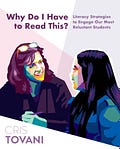





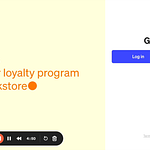
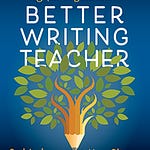
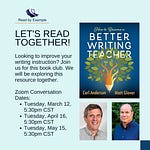


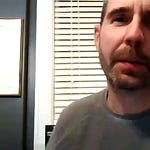
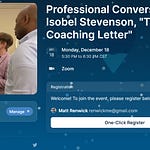


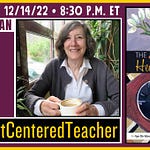
How Cris Tovani Uses Literacy Strategies to Engage Her Most Reluctant Students